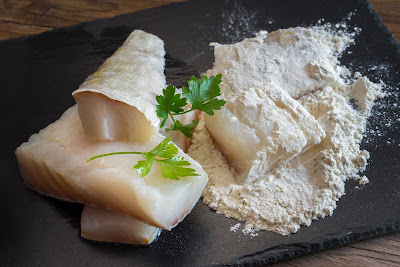A look at the
evolution of food in southwestern Pennsylvania – WESTERN EUROPEANS: Part 8 – 2 - The
Basques and the Portuguese
I have
combined three cultures in this column due to their proximities, cuisines and
early reasons for immigrating to the United States (whalers, fishermen and
sailors): Spanish & French Basques
and the Portuguese.
The Basques
Around 200
BC there was a country formed called Basque. They spoke a language called Euskera. Immigration
records had to be inaccurate when the first Basques (1400) came to the US
because they didn’t speak French, Spanish and were from an unknown country
which got split in half by the newer borders of France and Spain. Later they began
speaking French in SW France and Spanish in northern Spain. Their Euskera
language and their original country disappeared. There are also many Basque
communities out west in the US.
Their cuisines have had an impact on western PA cuisine as you will see even
though it is difficult to get any numbers on the Basque immigration. The
sophisticated cuisines of France and Spain were simplified into an early
peasant cuisine but became more sophisticated as time went on.
Now in
western PA you can easily find paella, chicken & rice, tomato sauce (beef
stock, red wine and mushrooms), Ezkualdun Itarrak (pork and beans), Gazpacho
(chilled tomato soup), Spanish omelet, Spanish Salad (red kidney beans, onion,
green pepper, hard-boiled eggs & seasonings), Seafood stew (like Italian cioppino),
frijoles (pinto beans), chili con carne, sponge cake (flavored), Bistek
Ranchero (T-bone, onion, butter, tomato, jalapeno & spices), Huevos al Rabo
de Mestiza (salsa served on tortillas over cheesy fried egg) and finally Arroz
Doce (rice pudding).
Some beverages include Txakoli wine and Basque cider.
Spanish restaurants in Pittsburgh, PA
The Portuguese
The first
Portuguese immigrants (1511) were sailors and whalers looking for work along
the eastern coast of the US. The first were Jewish. More came in 1849 for the CA
gold rush and in 1910 Roman Catholics came when the Portuguese monarchy
collapsed. 1958-1980 and on a very large contingent came. They were creative and
thrifty.
Their cuisine
consists of hearty & bread soups, sausages like linquica (made from pork
butt and and seasonings), baked dishes and egg-rich baked goods. They brought Mediterranean spices, herbs and
special cooking and pickling methods.
They use
dried salt cod in many of their dishes such as Bacalhau (codfish cakes) and
Bacalhau a Gomes de Sa (codfish casserole).
Many meat dishes (roasted chicken or catalana) use piri piri (hot oil
sauce made with dried red peppers, herbs, spices whiskey, olive and vegetable
oils).
Breads
include cornbread made with white cornmeal and two flours, Massa Sovada (round
sweet bread), Pao Doce (sweet loaf bread) and malassadas (deep fried sweet
doughnuts).
Other dishes
include soup made with beans, onions, and sausage, steamed clams, escargot with
butter sauce and Caldo Verde (soup made with potatoes, kale and linquica).
Commonly
popular with the Spanish, Portuguese and Basques is Pil Pil (dried codfish with
garlic mayo).
Beverages
include Porto and Madiera wine.
There is a Portuguese Restaurant in
Shadyside, Pittsburgh. Café Zinho.
No website but on Facebook
FOOD AND INFORMATIONAL LINKS AND VIDEOS BELOW
PHOTOS OF FOOD FOR EACH COUNTRY
BASQUE:
BASQUE FOOD PHOTOS
https://euskalkazeta.com/favorite-basque-recipes/
Great site (above) with lots of recipe links
BASQUE PELOTE VIDEO:
https://www.youtube.com/watch?v=j9LipXseP9o&ab_channel=Ben%26Kaz
BASQUE DANCING VIDEO:
FOOD AND INFORMATIONAL LINKS AND VIDEOS BELOW
PHOTOS OF FOOD FOR EACH COUNTRY
PORTUGUESE:
LINK TO PORTUGUESE HOLIDAYS
https://www.expatica.com/pt/lifestyle/holidays/portuguese-holidays-105482/
https://www.expatica.com/pt/lifestyle/holidays/portuguese-holidays-105482/
Famous Portuguese Piri Piri links:
OTHER PORTUGUESE FOOD LINKS:
LINK to Allrecipes Portuguese Recipes
LINK to Food Network Portuguese Recipes
PORTUGAL TRAVEL VIDEO BELOW
LINK to Food Network Portuguese Recipes
PORTUGAL TRAVEL VIDEO BELOW









































No comments:
Post a Comment